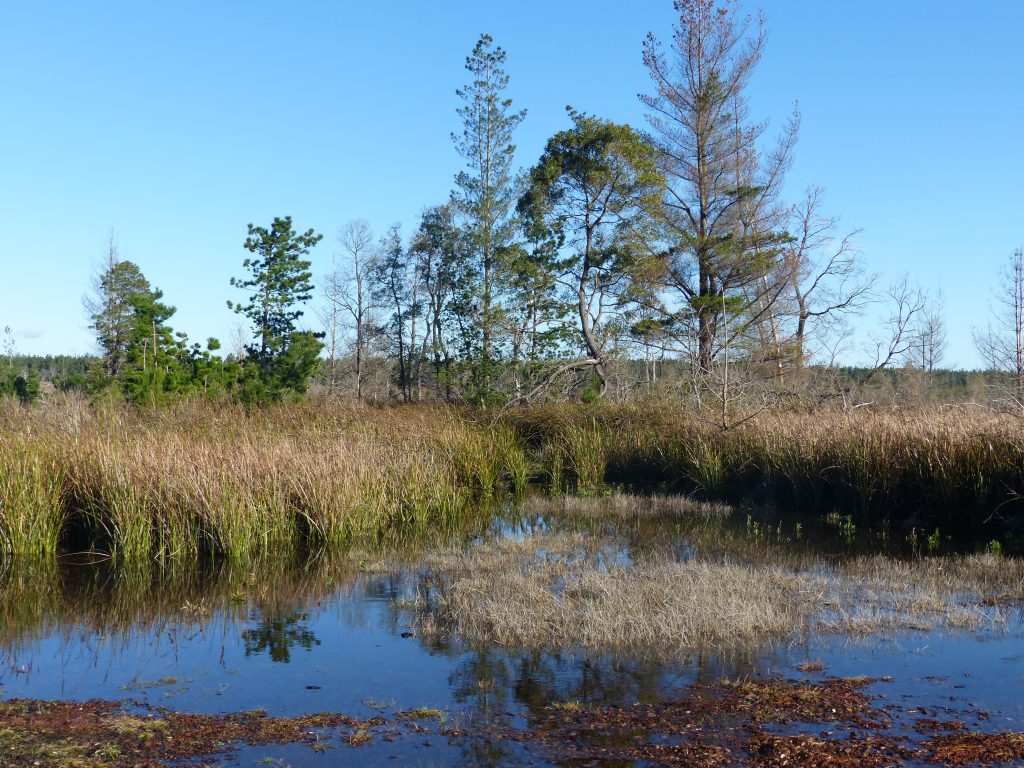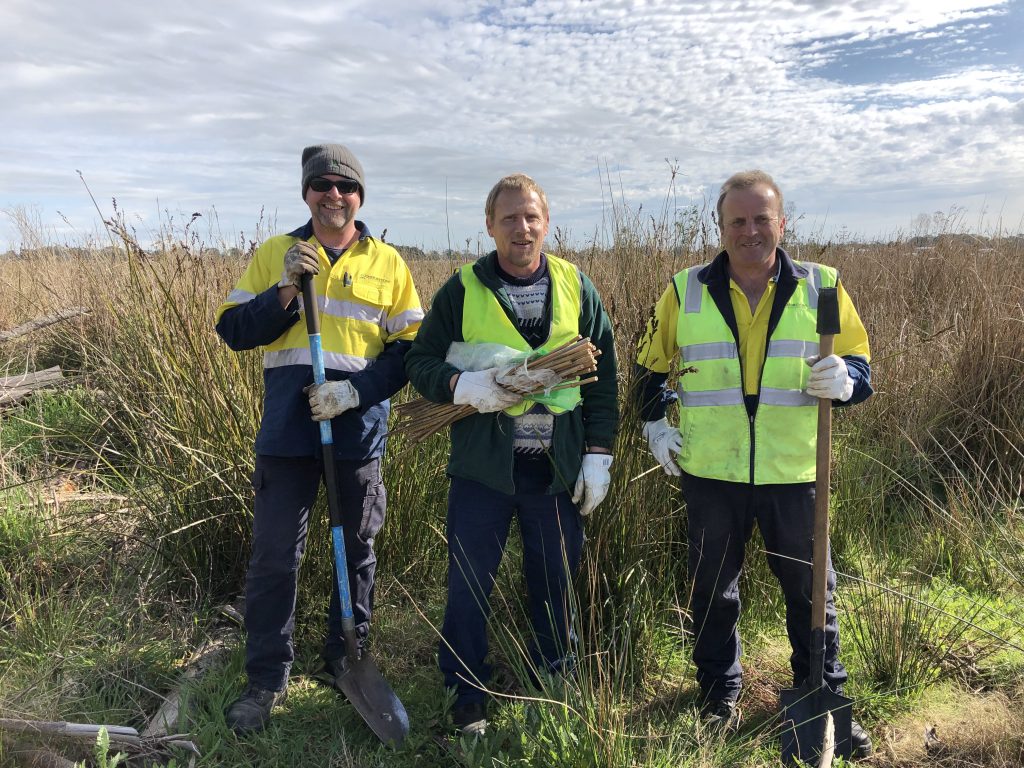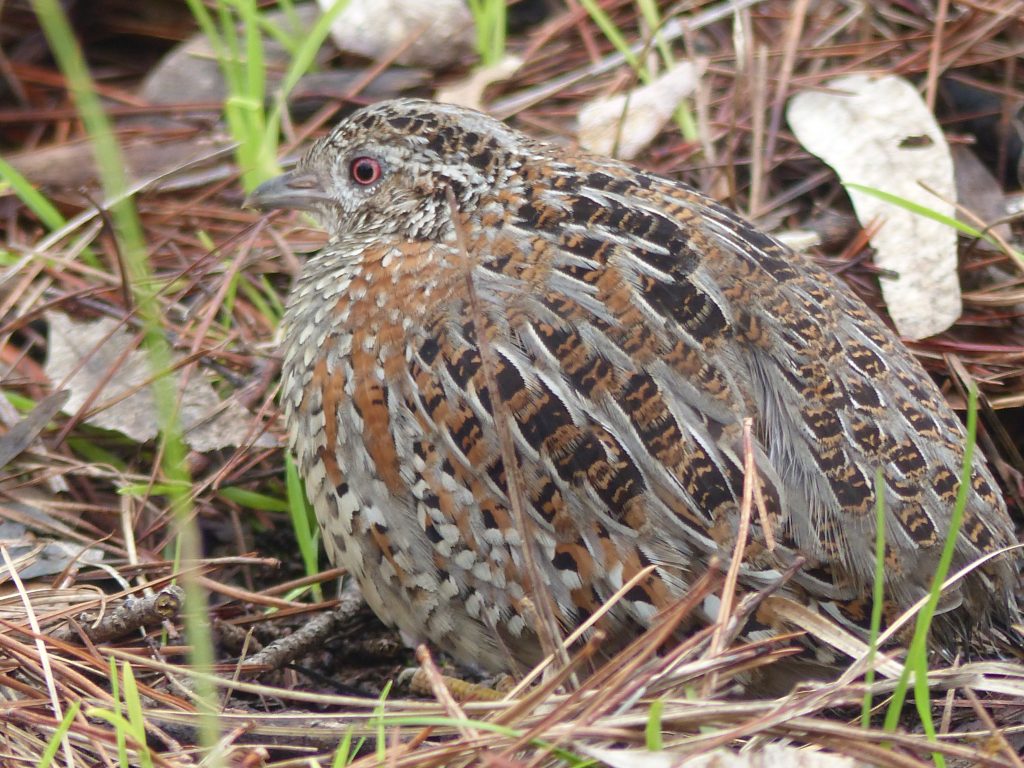OneFortyOne assisting with threatened species conservation
Threatened Species projects form a large part of what NGT does; helping native fish, rare birds, reptiles, small mammals, bats, marine creatures, frogs or insects. We try to do it all, but we rely on the support of volunteers, community groups, businesses, local, state and federal government grants, and donations. NGT has worked with local business, OneFortyOne Plantations, on a range of biodiversity projects, mostly aiming to help local threatened species.
 OneFortyOne (OFO) is interested in threatened species conservation both on and off their estate. And with NGT’s long history and strong interest in this field of ecology we have made progress together. OneFortyOne has supported the continuation of a four year project which started with Natural Resources South East, Restoring Under-represented Ecological Communities project (RUEC). This included planning and on-ground actions, and aimed to review the progress in threatened species conservation actions as set out in Regional Action Plans (RAPs). Funding for RUEC ceased in mid 2018, however with the support from OneFortyOne, NGT has kept things alive.
OneFortyOne (OFO) is interested in threatened species conservation both on and off their estate. And with NGT’s long history and strong interest in this field of ecology we have made progress together. OneFortyOne has supported the continuation of a four year project which started with Natural Resources South East, Restoring Under-represented Ecological Communities project (RUEC). This included planning and on-ground actions, and aimed to review the progress in threatened species conservation actions as set out in Regional Action Plans (RAPs). Funding for RUEC ceased in mid 2018, however with the support from OneFortyOne, NGT has kept things alive.
In 2018-19 NGT was keen to continue implementing actions within RAPs or Translocation Plans that were updated or prepared from 2014-18. These projects included:
- Does the Southern Brown Bandicoot (Isoodon obesulus) still occur near Avenue?
- Assisting Cassinia tegulata (Avenue Cassinia) survival through prescribed burning of roadside populations in the mid south-east
- Preventing the extinction of the Silver Xenica (Oreixenica lathoniella) butterfly in South Australia through a cross-border translocation
- Understanding the value of Acacia paradoxa (Hedge Wattle) to threatened birds in the Wimmera/Bangham districts
We’ll provide updates on these biodiversity projects as they develop.
In the meantime, NGT is assisting OneFortyOne (as a large landholder and manager of many hectares of remnant vegetation and wetlands) with biodiversity related projects on their estate. These projects have include:
- Preparing Threatened Species documentation,
- Providing advice on wetland protection,
- Training of staff in wetland edge determination,
- Undertaking revegetation and wetland restoration.
Through our partnership we are improving the condition of wetlands and patches of bush for the benefit of the local biodiversity, reducing woody weed cover, improving plantation planning and operations, and addressing pressures on threatened species. From 2017-19, the following have formed part of this partnership in biodiversity restoration:
- Daveys Red Gum woodland restoration and National Tree Day event
- Whites wetland revegetation and woody weed control
- Littles wetland revegetation and poplar control
- Yakkum Downs hydrological restoration and woody weed control
- Quarry screen plantings (at four active quarry sites)
NGT will provide regular updates on these projects as well. This month, ‘first cab off the rank’ is;
Daveys Red Gum Woodland restoration
This site includes a large (30 ha) area of woodland and wetland. Most of the area became infested with pine wildlings after Ash Wednesday (1983), and is now in the process of being restored.
Restoration commenced in 2017 when OneFortyOne removed large pine wildlings growing amongst River Red Gums, tea-tree, grasses, herbs and sedges. The removal gave the native plants some breathing space and reduced fine needle drop and accumulation, which essentially inhibits the colonisation of new native plants. The winter rainfall in 2017 was good, filling up the wetland and temporarily inundating the recovering red gum woodland area. This happened again in 2018, giving the entire site a boost.

Part of Daveys wetland in July 2018, showing good cover in water and wetland vegetation, but with some wildlings still to be removed.
During an opportune visit in July 2018, a pair of Painted Button-quail were seen, scratching around in the leaf litter under the River Red-gums. This ground-dwelling quail prefers grassy woodlands, and has returned to the more open woodland setting after the large pines were removed. Watch this short video as they perform their characteristic ‘scratching and spin’ to create circular scrapes (platelets) while foraging for small invertebrates amongst the leaf litter.
In 2019 we held a National Tree Day planting event. A large bus with two classrooms’ worth of kids, parents and teachers arrived from in the morning for a quick briefing of a day of activities. Then it was time to kit up, demo and get busy. 400 native plants were prepared and planted that day, and a great sausage sizzle helped to get us all through – thanks Tex! Overall 170 school students, teachers and parents, OneFortyOne (operations and admin staff), Noel Barr Toyota staff, NGT staff and a volunteer, all helped revegetate the site.

Left to right: Mick (OneFortyOne), Ryan (NGT) and Millsy (OneFortyOne) helping to finish off planting the red gums around the wetland
The restoration aimed to help butterflies, especially the Lomandra-feeding skippers (Splendid and Orange Ochres). Many Lomandra longifolia (Matt Rushes) were planted to encourage and/or support existing colonies. A survey will be undertaken this coming January-February to search for these rare butterflies.
Thankyou to Tom Linnell and the crew from Tension Woods College, Linda Cotterill and Terry Higgins from OneFortyOne, for putting on the day, and Noel Barr Toyota for the donated tree guards.


